27 April
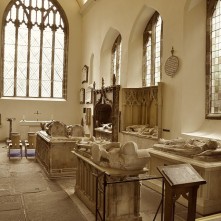
Lewis Chapel, St Mary's Church, Abergavenny.
1536 - Writs were issued summoning Parliament and a letter sent to Thomas Cranmer, Archbishop of Canterbury, asking him to attend. Click here to read more.
1536 - John Stokesley, Bishop of London, was approached regarding whether Henry VIII could put aside his second wife Anne Boleyn. Click here to read more.
1584 – Death of David Lewis, civil lawyer and judge involved in the maritime cases of Elizabeth I's reign. He was buried in St Mary's Church, Abergavenny, in the part of the church now known as the Lewis Chapel.
1609 – Death of Sir Edward Michelborne, member of Parliament, soldier and adventurer, after becoming ill in January that year. In James I's reign, he obtained a royal licence “to discover the countries of Cathay, China, Japan, Corea, and Cambaya, and to trade there”, and he set sail on 1st December 1604, returning in July 1606 after time spent plundering Dutch settlements in Indonesia. He was buried in Hackney.
28 April
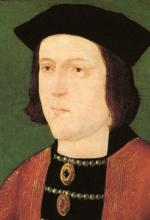
Edward IV
1442 – Birth of Edward IV at Rouen, Normandy. Edward was the son of Richard, 3rd Duke of York, and Cecily Neville, and was King of England from 1461 to 1470, until he was overthrown by the Earl of Warwick who restored Henry VI, and then from 1471 to his death in 1483.
1489 – Death of Henry Percy, 4th Earl of Northumberland, magnate. He was killed when he confronted protesters at South Kilvington, near Thirsk, and his retainers failed to defend him. His unpopularity had been caused by his actions, or rather inaction, at the Battle of Bosworth, when he chose to keep his retainers out of the battle and Richard III, who his people supported, was defeated and killed.
1533 – Death of Nicholas West, Bishop of Ely, diplomat and former Chaplain to Catherine of Aragon, at his manor in Downham. He was buried in Ely Cathedral, in the chantry chapel that he had built. West got into trouble in 1530, actually being charged with praemunire, for his support of Catherine of Aragon and, therefore, opposition to Henry VIII's policies. He was imprisoned briefly.
1536 – Reports of council meetings and Thomas Cromwell's meeting with Dr Richard Sampson aroused suspicion.
1548 – Death of Sir Anthony Browne, courtier and Keeper of Oatlands Palace, at Byfleet, Surrey. Browne was involved in Anne Boleyn's downfall, reporting that his sister, the Countess of Worcester, had told him that Anne had committed adultery and possible incest. Browne was also the one who informed King Henry VIII that he was dying.
1556 – Execution of Richard Uvedale at Tyburn for his involvement in Henry Dudley's plot against Mary I.
1558 – Execution of eighty-two year old Walter Mylne, priest and Protestant martyr, for heresy at St Andrews, Scotland. So appalled at the planned burning of this aged man were the townsfolk that they refused to provide materials for the burning, and Mylne had to be escorted to the stake by armed guard.
1572 – Burial of William Paulet, 1st Marquis of Winchester, administrator and nobleman. He was buried at Basing. Under Henry VIII he was Lord Great Chamberlain, Great Master of the Household, Lord President of the Privy Council and Lord Treasurer. He also served Edward VI, Mary I and Elizabeth I as Lord Treasurer.
1580 – Baptism of William Herbert, 3rd Earl of Pembroke, courtier and patron of the Arts, at St Mary's Church, Wilton, Wiltshire. Herbert was Chancellor of Oxford University and Broadgates Hall honoured him for his patronage and financial support by changing its name to Pembroke College.
1603 - Elizabeth I’s funeral took place in London. Click here to read more about it.
29 April
1500 – Birth of William Dacre, 3rd Baron Dacre of Gilsland and 7th Baron Greystoke. He was the eldest son of Thomas Dacre, 2nd Baron of Gilsland, and Elizabeth Greystoke, Baroness Greystoke. He was married twice, to Lady Elizabeth Talbot and then to Anne Hastings. His offices included Captain of Norham Castle, Steward of Penrith, Warden of the West Marches, Governor of Carlisle and Warden of the Middle Marches. He died on 18th November 1563.
1536 – Anne Boleyn argued with Sir Henry Norris, rebuking him with the words “You look for dead men's shoes, for if aught came to the King but good, you would look to have me” and thereby speaking of the King's death, something that amounted to treason. When she realised her mistake, Anne instructed Norris to go to her almoner the next day and take an oath that she “was a good woman”.
1579 – Death of Richard Cheyney, Bishop of Gloucester, at The Lodge in Painswick, Gloucestershire, the bishop's manor. He was buried in his cathedral.
1594 – Death of Thomas Cooper, Bishop of Winchester and theologian, at Winchester. He was buried in his cathedral, on the south side. Cooper's works included “Cooper's Chronicle”, Thesaurus Linguae Romanae et Britannicae and “An Admonition to the People of England”, which was directed against Puritans.
1617 – Death of Sir Dru Drury, courtier, member of Parliament, friend of Thomas Howard, 4th Duke of Norfolk, and Lieutenant of the Tower of London (1595-6), at Riddlesworth Hall in Norfolk. In 1586, Drury and Sir Amyas (Amias) Paulet were chosen to supervise Mary, Queen of Scots during her imprisonment. He was buried in Riddlesworth Parish Church.
30 April
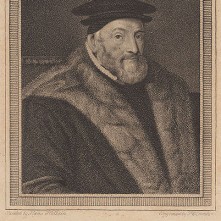
Thomas Audley
1536 - Scottish theologian Alexander Alesius witnessed an argument between Queen Anne Boleyn and Henry VIII, and at 11 o'clock that night, the King and Queen's upcoming visit to Calais was cancelled and arrangements made for the King to journey alone a week later. Also 30th April, court musician and member of the Boleyn circle, Mark Smeaton, was taken to Thomas Cromwell's house in Stepney and interrogated. Within twenty-four hours, he had confessed to making love three times to the Queen.
1544 – Death of Thomas Audley, Baron Audley of Walden and Lord Chancellor, at his home in Aldgate, London. Audley was Cromwell's right hand man in 1536, during the fall of Anne Boleyn, and became even more important after Cromwell's fall.
1547 – Sir Anthony Denny was made Henry VIII's Groom of the Stool.
1563 – Death of Henry Stafford, 10th Baron Stafford, at Caus Castle, Shropshire. Stafford was the only legitimate son of Edward Stafford, 3rd Duke of Buckingham, and his wife, Eleanor, daughter of Henry Percy, 4th Earl of Northumberland.
1595 – Death of Thomas Bedwell, mathematician, engineer and keeper of the ordnance store at the Tower of London. He was buried at the Tower, in the Chapel of St Peter ad Vincula. Bedwell's engineering projects included him supervising the building of Dover harbour, giving advice on the fortification of Portsmouth and working on the River Thames' defences at Tilbury and Gravesend in 1588, at the time of the Spanish Armada.
1596 – Death of Sir John Puckering, administrator and Speaker of the House of Commons, from apoplexy. Puckering's other offices included Serjeant-at-Law, Recorder of Warwick, Privy Councillor and Lord Keeper of the Great Seal. In 1587, he was involved in the trial of Elizabeth I's secretary William Davison, appearing for the Crown. He was buried at Westminster Abbey, in St Paul's Chapel.
1596 – Death of Thomas Bickley, Bishop of Chichester, at the bishop's palace in Aldingbourne. He was buried in his cathedral.
1 May
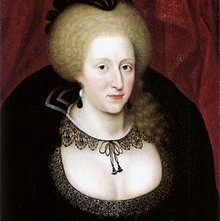
Anne of Denmark
1508 – Birth of Sir William Cavendish, administrator. Cavendish was one of Cromwell's main agents in the dissolution of the monasteries and was appointed Treasurer of the Chamber in February 1546.
1517 - The Evil May Day Riot. A mob of young apprentices and labourers gathered at St Paul's and then went on a rampage through the streets of London, causing damage to property and hurting those who stood in their way.
1536 – The May Day Joust. Henry VIII left abruptly, taking Sir Henry Norris with him and interrogating him about his alleged affair with Queen Anne Boleyn.
1551 – Death of Sir Edmund Knyvet, Norfolk landowner and MP. He helped the Duke of Norfolk suppress the Pilgrimage of Grace rebellion in 1536, served as Sheriff of Norfolk and Suffolk in 1539, and went with Norfolk to meet Anne of Cleves in January 1540. He also helped John Dudley, Earl of Warwick, suppress Kett's Rebellion in 1549. Knyvet was known for his hot temper and nearly had his his hand cut off after he was charged with hitting Thomas Clere, a servant of Henry Howard, Earl of Surrey, during a game of tennis.
1590 – James VI of Scotland brought Anne of Denmark, his bride, to Scotland. The couple had been married by proxy in Copenhagen in August 1589, but Anne had to abandon her journey to Scotland due to storms. James decided to go and fetch her, and the couple married properly at the Bishop's Palace in Oslo in November 1589.
1621 - Death of Robert Chaloner, Church of England clergyman and educational benefactor, probably at Amersham. He was buried there at St Mary's Church. Chaloner was Canon of Windsor, but is more known for the bequests he left supporting a master at a grammar school and scholars or lecturers at Christ Church, Oxford.
2 May
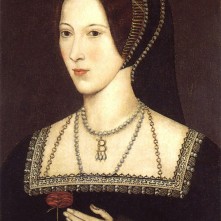
Anne Boleyn
1536 - Arrest of Anne Boleyn. She was informed that she was being accused of committing adultery with three different men, and that Smeaton and Norris had confessed. Anne was taken to her apartments until the tide of the Thames turned and then, at two o’clock in the afternoon, she was escorted by barge to the Tower of London.
1542 – Burial of Henry Clifford, 1st Earl of Cumberland and close friend of Henry VIII, at Skipton Church in Yorkshire. Cumberland served the King as Warden of the West Marches, and was rewarded for his service and loyalty during the Pilgrimage of Grace by being elected as a Knight of the Order of the Garter.
1550 – Burning of Joan Bocher, an Anabaptist, at Smithfield. Bocher believed that Christ's flesh was “not incarnate of the Virgin Mary” and was convicted of heresy and condemned to death.
1551 – Birth of William Camden, historian, headmaster and herald, at the Old Bailey, London. Camden is known for his “Britannia”, the first chorographical survey of Great Britain and Ireland, and his Annales Rerum Gestarum Angliae et Hiberniae Regnate Elizabetha, his history of Elizabeth I's reign, but he also wrote a Greek grammar and “Remaines of a Greater Worke, Concerning Britaine”, which was a collection of historical essays.
1568 – Mary, Queen of Scots escaped from Lochleven Castle. As a May Day masque took place at the castle, Mary was smuggled out and taken to a waiting boat.
1587 – Burial of Sir Thomas Bromley, Lord Chancellor, in Westminster Abbey.
1620 – Burial of Edward More, poet and grandson of Sir Thomas More. He was buried at Barnborough, Yorkshire.
3 May
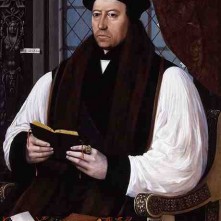
Thomas Cranmer
1446 – Birth of Margaret, Duchess of Burgundy, also known as Margaret of York, third daughter of Cecily Neville (see above) and Richard, 3rd Duke of York. She was married to Charles the Bold, who became Duke of Burgundy, and she was godmother to Emperor Charles V.
1524 – Death of Richard Grey, 3rd Earl of Kent, son of George Grey, 2nd Earl of Kent, and Anne Bourchier (née Woodville).
1536 - A very shocked Archbishop Thomas Cranmer wrote to King Henry VIII regarding his patron Queen Anne Boleyn’s arrest. In his letter, he wrote “I am clean amazed, for I had never better opinion of woman”, but tempered this with “but I think your Highness would not have gone so far if she had not been culpable”, so as not to offend the King.
1568 – Death of Sir Edward Rogers, courtier, member of Parliament and Comptroller and Vice-Chamberlain of the Household to Elizabeth I. Rogers served Henry VIII as Esquire of the Body, Sewer of the Privy Chamber and Carver; Edward VI as a Gentleman of the Privy Chamber and Elizabeth I as Vice-Chamberlain, Captain of the Guard, Privy Councillor and Comptroller. In Mary I's reign, he was imprisoned for a time after being implicated in Wyatt's Rebellion.
1580 – Death of Thomas Tusser, poet, farmer and writer on agriculture, at the age of sixty-five. He was buried at Manningtree in Essex. Tusser is known for his “A Hundreth Good Pointes of Husbandrie”, a poem recording the country year, and “Five Hundreth Points of Good Husbandry United to as many of Good Huswiferie”, an instructional poem on farming.
1610 – Death of Sir William Skipwith, member of Parliament, Sheriff of Leicestershire and poet. In his “Worthies of England”, author and historian Thomas Fuller described Skipwith as “dexterous at the making fit and acute epigrams, poesies, mottoes and devices”. He was buried at Prestwold Church in Leicestershire.

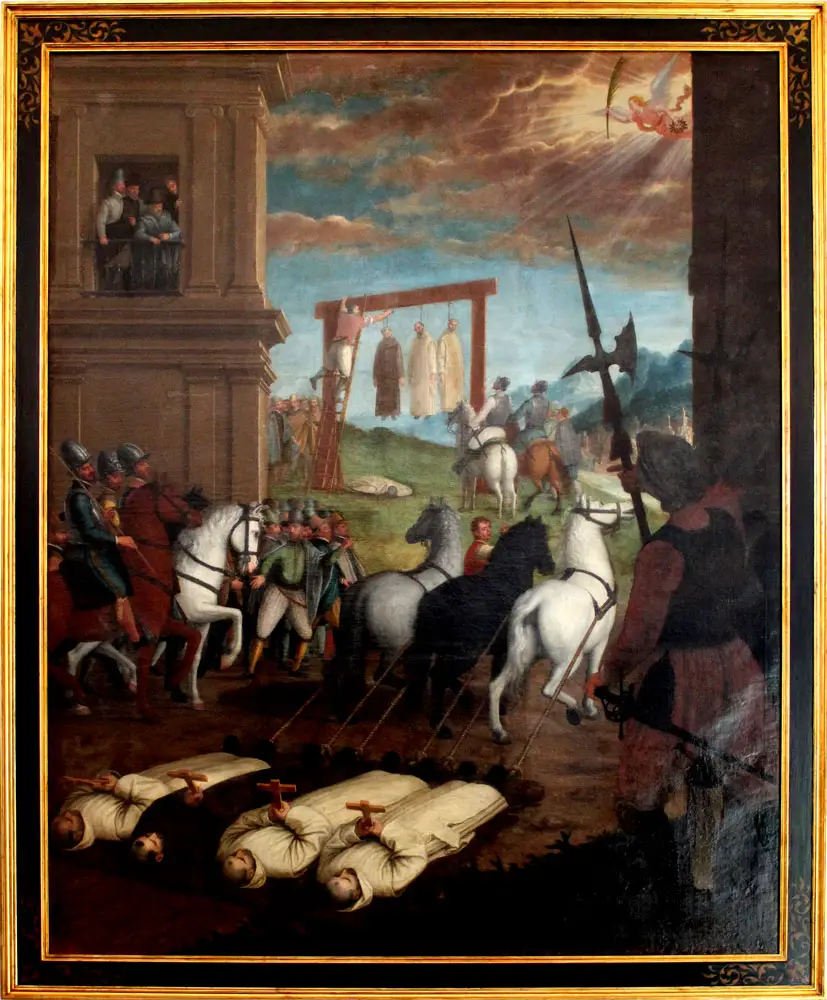

Leave a Reply